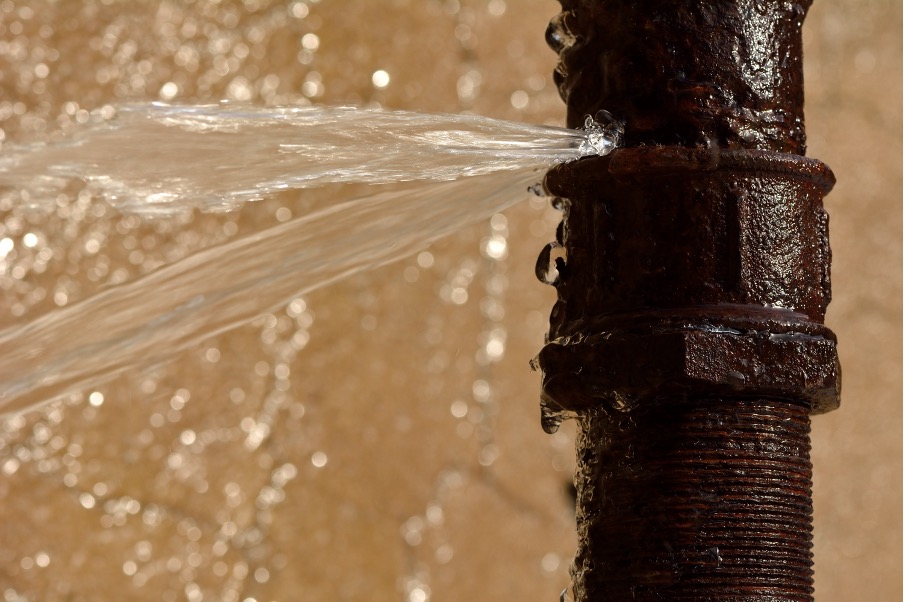Presented here in the next paragraph you can find some great additional info on the subject of Leaking water lines.

Early discovery of leaking water lines can alleviate a possible disaster. In addition to conserving you cash, it will lessen the worry as well as frustration. The moment you find a leak, calling your plumber for repair work is the most effective solution. Nevertheless, some tiny water leakages might not show up. Here are some hacks that assist if you can not spot it with your nude eyes.
1. Analyze the Water Meter
Checking it is a proven means that aids you find leakages. If it relocates, that indicates a fast-moving leakage. This means you might have a slow-moving leak that could also be below ground.
2. Inspect Water Consumption
Examine your water bills as well as track your water consumption. As the one paying it, you ought to see if there are any type of disparities. If you spot sudden changes, regardless of your usage coinciding, it indicates that you have leaks in your plumbing system. Keep in mind, your water bill must fall under the same array each month. An unexpected spike in your costs suggests a fast-moving leak.
A consistent increase every month, even with the same practices, reveals you have a sluggish leakage that's also slowly intensifying. Call a plumber to extensively check your residential or commercial property, specifically if you really feel a warm area on your flooring with piping beneath.
3. Do a Food Coloring Test
When it comes to water consumption, 30% comes from bathrooms. If the shade somehow infiltrates your bowl during that time without flushing, there's a leakage in between the tank as well as bowl.
4. Asses Outside Lines
Don't fail to remember to check your outside water lines as well. Should water permeate out of the link, you have a loosened rubber gasket. One small leak can squander heaps of water as well as surge your water costs.
5. Assess the circumstance as well as examine
Home owners need to make it a practice to examine under the sink counters as well as also inside closets for any kind of bad odor or mold and mildew development. These two warnings suggest a leak so prompt focus is called for. Doing routine examinations, even bi-annually, can save you from a significant trouble.
If you recognize your residence is already old, keep a watchful eye on your heating systems, hoses, pipes etc. Look for stainings and also weakening as most home appliances as well as pipes have a life expectancy. They will likewise naturally degrade due to tear and also use. If you believe leaking water lines in your plumbing system, do not await it to intensify. Call a professional plumber immediately so you don't end up with a dreadful mess in your home.
Early discovery of leaking water lines can reduce a potential disaster. Some little water leakages might not be visible. Checking it is a proven means that aids you discover leaks. One small leakage can lose bunches of water as well as spike your water bill.
If you suspect leaking water lines in your plumbing system, don't wait for it to intensify.
WARNING SIGNS OF WATER LEAKAGE BEHIND THE WALL
PERSISTENT MUSTY ODORS
As water slowly drips from a leaky pipe inside the wall, flooring and sheetrock stay damp and develop an odor similar to wet cardboard. It generates a musty smell that can help you find hidden leaks.
MOLD IN UNUSUAL AREAS
Mold usually grows in wet areas like kitchens, baths and laundry rooms. If you spot the stuff on walls or baseboards in other rooms of the house, it’s a good indicator of undetected water leaks.
STAINS THAT GROW
When mold thrives around a leaky pipe, it sometimes takes hold on the inside surface of the affected wall. A growing stain on otherwise clean sheetrock is often your sign of a hidden plumbing problem.
PEELING OR BUBBLING WALLPAPER / PAINT
This clue is easy to miss in rooms that don’t get much use. When you see wallpaper separating along seams or paint bubbling or flaking off the wall, blame sheetrock that stays wet because of an undetected leak.
BUCKLED CEILINGS AND STAINED FLOORS
If ceilings or floors in bathrooms, kitchens or laundry areas develop structural problems, don’t rule out constant damp inside the walls. Wet sheetrock can affect adjacent framing, flooring and ceilings.
https://www.servicemasterbyzaba.com/blog/how-to-detect-water-leakage-in-walls/

I was shown that report about Hacks to detect leaks from a friend on a different domain. Enjoyed our write up? Please share it. Help other people discover it. Thank-you for going through it.
 Mackenzie Rosman Then & Now!
Mackenzie Rosman Then & Now! Michael Jordan Then & Now!
Michael Jordan Then & Now! Tyra Banks Then & Now!
Tyra Banks Then & Now! Lisa Whelchel Then & Now!
Lisa Whelchel Then & Now! Heather Locklear Then & Now!
Heather Locklear Then & Now!